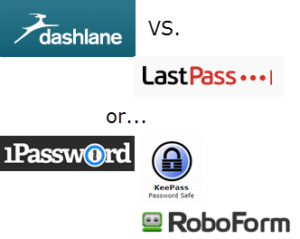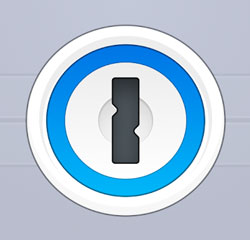While taking a look at password managers, you will come across many different options. Locating the best option out of them can be quite overwhelming. When you go through password managers, you will figure out that 1password, Lastpass and Dashlane are some of. Comparing LastPass vs Dashlane Go beyond storing passwords and experience complete protection of your digital life for $3 per month. Avoid password reuse and let LastPass auto-generate and fill in a random, secure password when you’re signing up for something new or changing an old password. Keeper Security. Keeper Security’s password manager has an app for macOS, Windows, Linux, iOS. Dashlane for you. Try the password manager that makes the internet easier by autofilling your passwords, payments, and personal info. See how it works. Dashlane for Business. Get total password protection and zero business disruption, with the password manager employees will actually use. Open the Dashlane application and select File Import passwords LastPass in the menu at the top of the window. Select your.csv file and click on Import. Dashlane will tell you what information has been successfully imported. Only your passwords will be in the Passwords section of Dashlane, other items will be found in the other sections.
1Password can import your passwords and credit cards from Dashlane. When you import from Dashlane:

- Your Dashlane passwords will be converted into 1Password logins.
- Credit cards will be imported.
- Addresses and other items will not be imported.
Dashlane import is only available on 1Password.com and requires a 1Password account.
Step 1: Export your data from Dashlane
Before you export your data from Dashlane, temporarily turn off any backup software you may be using, so the unencrypted export file isn’t backed up. Then follow these steps:

- Open Dashlane on your Mac or PC and sign in to your account.
- Choose File > Export > JSON format. Enter your Master Password if asked.
- Save the file to your desktop.

Step 2: Import your data into 1Password
To import your data on 1Password.com:
- Open your browser and sign in to your account on 1Password.com.
- Click your name in the top right and choose Import.
- Click Dashlane.
- Choose the vault you want to import your data into. If you’re importing personal data, choose the Personal or Private vault.
- Click inside the dotted rectangle to open a file browser. Browse to your desktop and select the JSON file you created earlier.
If you have any bank accounts, addresses, or other items saved in Dashlane, copy them manually into 1Password. Open 1Password on your desktop or mobile device and click the + button to add items.
After you’ve imported your information into 1Password, delete the unencrypted JSON file, and turn on any backup software you turned off earlier.
Next steps
- Uninstall Dashlane and the Dashlane extension to avoid conflicts with 1Password.
- Get 1Password in your browser to save and fill passwords on the web.
Get help
If you’re having trouble importing your Dashlane data, contact 1Password Support.
A security researcher has recommended against using the LastPass password manager Android app after noting seven embedded trackers. The software's maker says users can opt out if they want.
German infosec bod Mike Kuketz spotted LastPass's trackers in analysis produced by Exodus, which describes itself as 'a non-profit organization led by hacktivists [whose] purpose is to help people get a better understanding of the Android applications tracking issues.'
The Exodus report on LastPass shows seven trackers in the Android app, including four from Google for the purpose of analytics and crash reporting, as well as others from AppsFlyer, MixPanel, and Segment. Segment, for instance, gathers data for marketing teams, and claims to offer a 'single view of the customer', profiling users and connecting their activity across different platforms, presumably for tailored adverts.
LastPass has many free users – is it a problem if its owner seeks to monetise them in some way? Kuketz said it is. Typically, the way trackers like this work is that the developer compiles code from the tracking provider into their application. The gathered information can be used to build up a profile of the user's interests from their activities, and target them with ads.

Even the app developers do not know what data is collected and transmitted to the third-party providers, said Kuketz, and the integration of proprietary code could introduce security risks and unexpected behaviour, as well as being a privacy risk. These things do not belong in password managers, which are security-critical, he said.
Kuketz also investigated what data is transmitted by inspecting the network traffic. He found that this included details about the device being used, the mobile operator, the type of LastPass account, the Google Advertising ID (which can connect data about the user across different apps). During use, the data also shows when new passwords are created and what type they are. Kuketz did not suggest that actual passwords or usernames are transmitted, but did note the absence of any opt-out dialogs, or information for the user about the data being sent to third parties. In his view, the presence of the trackers demonstrates a suboptimal attitude to security. Kuketz recommended changing to a different password manager, such as the open-source KeePass.
LastPass to limit fans of free password manager to one device type only – computer or mobile – from next month
READ MOREDashlane To 1password
Do all password apps contain such trackers? Not according to Exodus. 1Password has none. KeePass has none. The open-source Bitwarden has two for Google Firebase analytics and Microsoft Visual Studio crash reporting. Dashlane has four. LastPass does appear to have more than its rivals. And yes, lots of smartphone apps have trackers: today, we're talking about LastPass.
Password managers are essential for most users since the number of passwords to be managed exceeds our ability to remember them, and the complex passwords needed for security are particularly hard to memorise. Using the same password across multiple services is poor practice because it increases the impact if a password is stolen or inadvertently disclosed.
The discussion about trackers in LastPass comes at a bad time. Earlier this month the company (which is owned by LogMeIn) crippled its free offering to support only a single device type, and many users have said they would switch as a result – like user Mattias Ahnberg, who wrote on Twitter: 'This means I will finally migrate away to 1Password instead of being blocked by such a limitation that you're adding.' Losing free users may even have been the intention, but the tracking issues affect paid users as well, which would be more of a concern.
A LastPass spokesperson told us: 'No sensitive personally identifiable user data or vault activity could be passed through these trackers. These trackers collect limited aggregated statistical data about how you use LastPass which is used to help us improve and optimize the product.
'All LastPass users, regardless of browser or device, are given the option to opt-out of these analytics in their LastPass Privacy Settings, located in their account here: Account Settings > Show Advanced Settings > Privacy. We are continuously reviewing our existing processes and working to make them better to comply, and exceed, the requirements of current applicable data protection standards.' ®
Dashlane Vs 1password Vs Lastpass
Editor's note: This article was corrected after publication to refer to the more popular KeePass rather than KeyPass. Neither have trackers.
Transfer Lastpass To 1password
